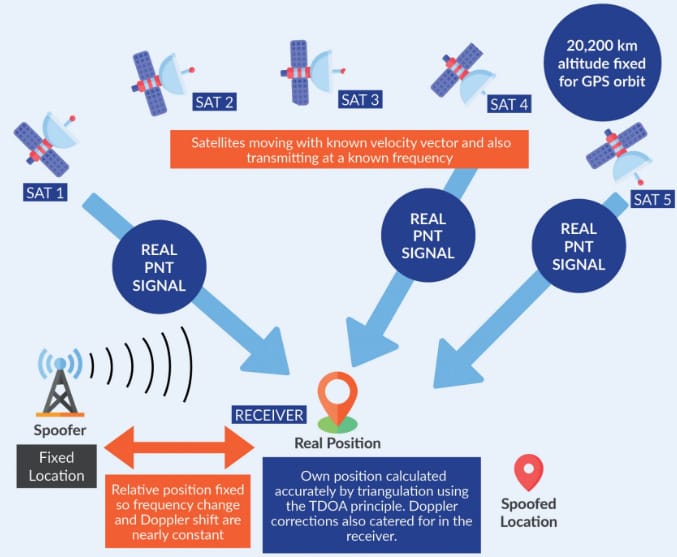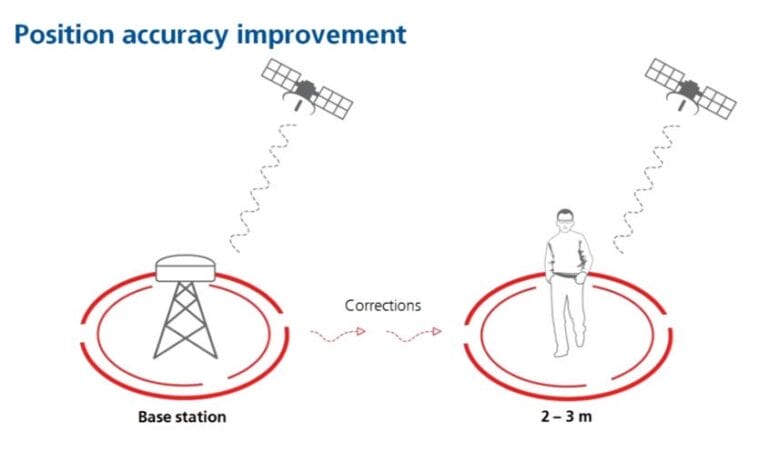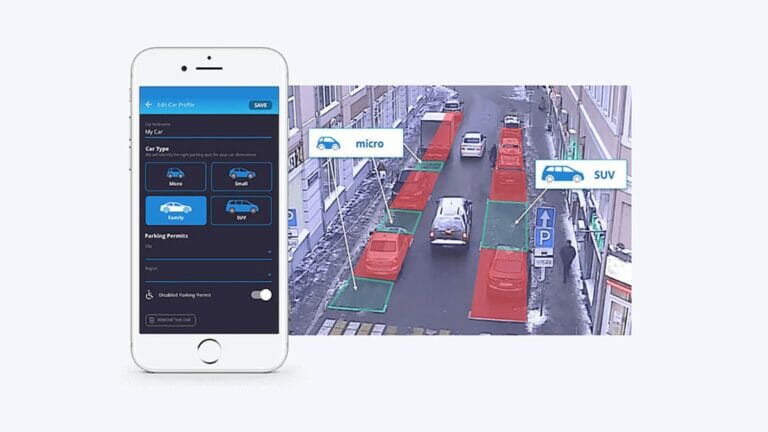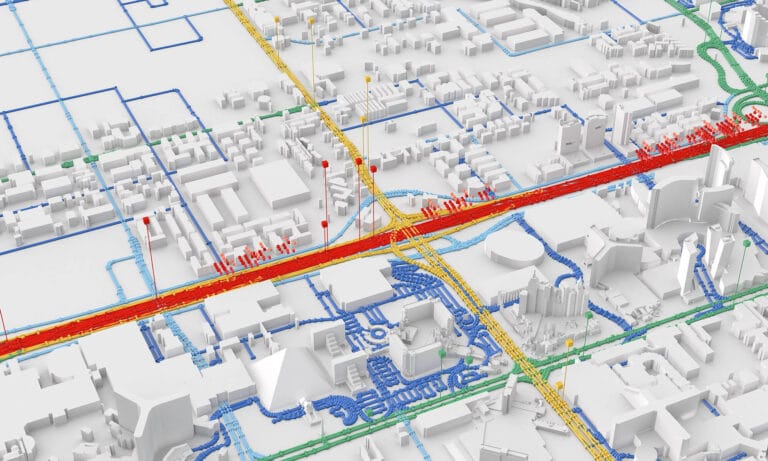
How does real-time tracking improve logistics? Well, imagine being able to know exactly where your package is at any given moment. It’s like having a superpower that ensures your shipment arrives on time, every time. Real-time tracking has revolutionized the world of logistics, making it more efficient and reliable than ever before. So, buckle up and let’s dive into the exciting world of real-time tracking in logistics!
Gone are the days of anxiously waiting for a package, unsure of its whereabouts. With real-time tracking, you can stay in the know every step of the way. From the moment your package leaves the warehouse to the final destination, you can track its journey with just a few clicks. It’s like having a personal GPS for your shipment, providing peace of mind and eliminating the stress of uncertainty.
But how does real-time tracking actually improve logistics? Well, by providing up-to-the-minute information about the location and status of a shipment, it allows logistics companies to make informed decisions and optimize their operations. From route planning to scheduling, real-time tracking enables them to streamline their processes, reduce delays, and improve overall efficiency.
So, whether you’re eagerly awaiting a long-awaited delivery or simply curious about how logistics work behind the scenes, real-time tracking is the game-changer you never knew you needed. Get ready to discover the incredible ways it improves logistics and makes the world a more connected and efficient place!

How Does Real-time Tracking Improve Logistics?
Real-time tracking has revolutionized the logistics industry, providing a range of benefits that enhance efficiency, transparency, and customer satisfaction. With real-time tracking, logistics companies are able to monitor the movement of goods at every stage of the supply chain, from the warehouse to the final destination. This article will explore the various ways in which real-time tracking improves logistics, including increased visibility, better inventory management, optimized route planning, enhanced customer experience, reduced costs, improved security, and streamlined operations.
Increased Visibility
Real-time tracking technology allows logistics companies to have complete visibility over their shipments. By utilizing GPS, RFID tags, or barcodes, organizations can track the exact location of their goods in real-time. This increased visibility enables logistics managers to have accurate information about the status and whereabouts of their shipments. They can easily identify potential delays or bottlenecks in the supply chain and take immediate action to resolve them. Real-time visibility also enables proactive communication with customers, providing them with up-to-date information about their orders and reducing the number of inquiries or complaints.
Benefits:
1) Real-time visibility helps logistics companies identify and mitigate potential issues in the supply chain promptly.
2) Proactive communication with customers improves satisfaction and reduces inquiries or complaints.
3) Accurate information about shipment status improves decision-making and allows for better planning.
Better Inventory Management
Real-time tracking systems enable logistics companies to have accurate and up-to-date information about their inventory levels. By knowing the exact quantity and location of each item in real-time, organizations can optimize their inventory management processes. They can minimize overstocking and stockouts, as well as reduce holding costs. Real-time tracking also enables efficient warehouse operations, as it allows for the precise tracking and management of inventory movements, ensuring that products are stored and organized in the most efficient manner.
Benefits:
1) Real-time tracking helps optimize inventory levels, reducing costs and improving operational efficiency.
2) Accurate information about inventory locations enables efficient warehouse operations.
3) Minimizing overstocking and stockouts leads to better customer satisfaction and increased profitability.
Optimized Route Planning
Real-time tracking systems provide logistics companies with valuable data that can be used to optimize route planning. By analyzing real-time information about traffic conditions, road closures, and weather forecasts, companies can select the most efficient routes for their deliveries. This not only reduces transportation costs but also improves delivery times and enhances customer satisfaction. Real-time tracking also helps in rerouting shipments in case of unexpected delays or disruptions, ensuring that goods reach their destinations on time.
Benefits:
1) Real-time tracking allows for the selection of the most efficient routes, reducing transportation costs.
2) Optimized route planning improves delivery times and customer satisfaction.
3) The ability to reroute shipments in real-time minimizes the impact of unexpected delays or disruptions.
Enhanced Customer Experience
Real-time tracking offers customers the convenience of tracking their shipments in real-time. By providing customers with access to a tracking portal or sending them automated notifications, logistics companies can keep them informed about the status and location of their orders. This transparency builds trust and enhances the overall customer experience. Customers appreciate being able to anticipate delivery times, plan accordingly, and have peace of mind knowing where their shipments are at all times.
Benefits:
1) Real-time tracking improves customer satisfaction by providing transparency and timely information.
2) Customers can anticipate delivery times and plan accordingly, leading to better customer experience.
3) Enhanced customer experience leads to increased customer loyalty and repeat business.
Reduced Costs
Real-time tracking systems help reduce costs in several ways. By optimizing routes, logistics companies can minimize fuel consumption and cut down on transportation expenses. Improved inventory management reduces holding costs and the risk of obsolescence. Real-time tracking also enables better coordination between different stakeholders in the supply chain, reducing inefficiencies and wastage. Additionally, by proactively addressing potential delays or disruptions, logistics companies can avoid the costs associated with missed deadlines or customer dissatisfaction.
Benefits:
1) Optimized routes lead to reduced fuel consumption and transportation costs.
2) Improved inventory management minimizes holding costs and the risk of obsolescence.
3) Proactive resolution of delays or disruptions avoids costs associated with missed deadlines or customer dissatisfaction.
Improved Security
Real-time tracking systems enhance security in logistics operations. By continuously monitoring shipments, companies can quickly identify any unauthorized access or tampering. This allows for immediate intervention and reduces the risk of theft or damage to goods. Real-time tracking also provides valuable data for insurance purposes, ensuring that companies have accurate and timely information to support claims in case of any incidents.
Benefits:
1) Real-time tracking helps prevent theft or damage to goods by enabling immediate intervention.
2) Accurate tracking data provides evidence for insurance claims and facilitates timely settlements.
3) Enhanced security measures build trust and confidence among customers and stakeholders.
The Future of Real-time Tracking in Logistics
The potential of real-time tracking in the logistics industry is enormous, and advancements in technology continue to enhance its capabilities. In the future, we can expect further integration of real-time tracking with other technologies such as artificial intelligence and machine learning. This will enable logistics companies to analyze vast amounts of data and make more informed decisions regarding route optimization, inventory management, and customer service. Real-time tracking will become an essential component of a seamless and efficient logistics ecosystem, delivering benefits not only to logistics companies but also to customers and the overall supply chain.
Challenges and Considerations for Implementing Real-time Tracking
While real-time tracking offers numerous benefits, implementing it is not without challenges. Companies must consider factors such as the cost of implementing the necessary technology, training employees to effectively utilize the tracking systems, and ensuring data privacy and cybersecurity. Additionally, integrating real-time tracking into existing logistics processes and systems requires careful planning and coordination. Despite these challenges, the advantages of real-time tracking outweigh the costs, and its implementation can propel logistics companies ahead of their competition.
Conclusion
Real-time tracking has brought about a significant transformation in the logistics industry. The ability to track shipments in real-time has revolutionized operations, leading to increased visibility, better inventory management, optimized route planning, enhanced customer experience, reduced costs, improved security, and streamlined operations. The future of real-time tracking holds even greater potential, as advancements in technology continue to bolster its capabilities. By embracing real-time tracking, logistics companies can stay ahead in an increasingly competitive industry, delivering superior service and satisfaction to their customers.
Key Takeaways: How Does Real-time Tracking Improve Logistics?
– Real-time tracking allows companies to monitor the movement and location of their goods at all times, ensuring better control and visibility in logistics operations.
– It helps in optimizing routes and reducing delivery times by providing accurate and live data on traffic conditions, enabling companies to make timely adjustments.
– Real-time tracking improves inventory management by providing up-to-date information on stock levels, helping companies avoid stockouts or overstocking situations.
– It enhances customer satisfaction by enabling companies to provide accurate and reliable information about the status and estimated delivery time of shipments.
– Real-time tracking minimizes the risk of theft or damage to goods by allowing quick response in case of any security breach or deviation from the planned route.
Frequently Asked Questions
Real-time tracking has revolutionized the logistics industry, but you may still have some questions. Here are the answers to the most common inquiries related to how real-time tracking improves logistics.
1. How does real-time tracking help in improving the efficiency of logistics operations?
Real-time tracking allows logistics companies to have instant visibility into the location and status of their shipments. By knowing exactly where a package or a vehicle is, companies can optimize routes, minimize delays, and make better logistical decisions. This improved efficiency leads to faster delivery times, reduced costs, and overall better customer satisfaction.
Besides just tracking the location, real-time tracking also provides crucial data on factors like temperature, humidity, and shock during transportation. This information helps logistics companies ensure that sensitive goods, such as perishable items or electronics, are handled appropriately. Ultimately, real-time tracking empowers companies to streamline their operations and deliver a seamless customer experience.
2. How does real-time tracking enhance supply chain visibility?
Real-time tracking provides unparalleled supply chain visibility by allowing logistics companies to monitor the movement of goods at every stage. From the moment an order is placed to its final delivery, real-time tracking provides real-time updates on location, estimated arrival times, and any disruptions encountered along the way.
With this enhanced visibility, logistics companies can proactively address any issues that may arise, such as delays or route deviations. They can communicate these updates to customers in a timely manner, ensuring transparency and building trust. Real-time tracking also enables companies to make data-driven decisions, optimize inventory management, and improve overall supply chain efficiency.
3. How does real-time tracking help in preventing theft and improving security?
Real-time tracking plays a crucial role in preventing theft and improving security in the logistics industry. By monitoring the location and movement of shipments in real-time, companies can quickly identify any unauthorized or suspicious activity. This allows them to take immediate action and notify the relevant authorities.
Additionally, real-time tracking systems often include features such as geofencing and alerts. Geofencing allows logistics companies to create virtual boundaries for specific areas. If a shipment deviates from its predetermined route or enters a restricted area, an alert is triggered, enabling swift response and minimizing the risk of theft or unauthorized access. By providing this level of security, real-time tracking instills confidence in both businesses and consumers.
4. How does real-time tracking assist in optimizing inventory management?
Real-time tracking provides accurate and up-to-date information about the location and status of inventory. This helps logistics companies optimize their inventory management processes by reducing stockouts and excess inventory. With real-time tracking, companies can monitor inventory levels, track usage patterns, and forecast demand more effectively.
By having real-time visibility into inventory, companies can make data-driven decisions about when to restock, which products to prioritize, and how to allocate resources efficiently. This not only reduces carrying costs but also ensures that inventory is replenished on time, minimizing disruptions in the supply chain and improving overall operational efficiency.
5. How does real-time tracking improve customer satisfaction?
Real-time tracking significantly improves customer satisfaction by providing transparency, accurate delivery estimates, and proactive updates. Customers can track their orders in real-time, knowing exactly where their package is and when it will arrive.
With real-time tracking, logistics companies can also proactively communicate any delays or disruptions to customers, manage their expectations, and provide alternative solutions if necessary. This level of transparency and communication builds trust and enhances the overall customer experience. Real-time tracking enables logistics companies to deliver on time, resulting in happy customers who are more likely to become repeat buyers and recommend the company to others.
Summary
Real-time tracking is a super helpful tool that can improve logistics in many ways. It allows companies to know exactly where their products are, which helps them plan and make better decisions. With real-time tracking, businesses can reduce delays, improve customer satisfaction, and save money by preventing theft and loss. It’s like having a GPS for your packages!
Not only does real-time tracking benefit businesses, but it also benefits customers. They can stay updated on the whereabouts of their packages and have a better idea of when they will arrive. Real-time tracking makes the shipping process more efficient and transparent for everyone involved. So, the next time you order something online, thank real-time tracking for making sure your package gets to you on time!






